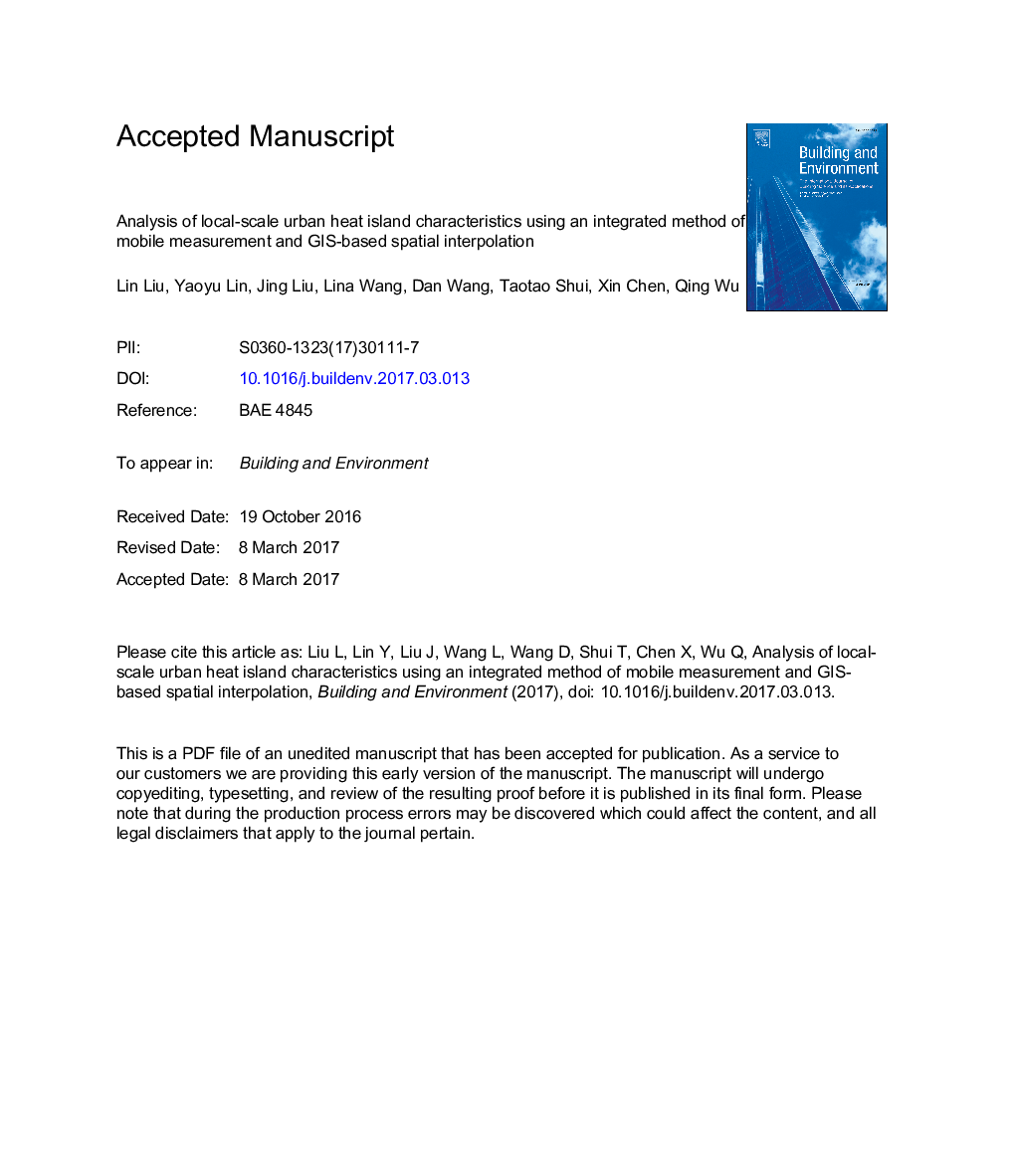| Article ID | Journal | Published Year | Pages | File Type |
|---|---|---|---|---|
| 4917313 | Building and Environment | 2017 | 37 Pages |
Abstract
Across a complex urban region with diversified urban patterns, the local climate usually varies with time and space. Achieving accurate local climatic characteristics by using efficient field survey method contributes to providing theoretical support and technical reference for climate-conscious eco-city construction. This study takes the Shenzhen Overseas Chinese Town (OCT) as research area, and mainly focuses on the local-scale urban heat island (UHI) characteristics under different urban patterns. An efficient method by integrating both the mobile measurement and GIS-based spatial interpolation is proposed and applied. By applying temporal corrections to the obtained mobile data, the local UHI intensities (LUHII) along the mobile route are expressed. Then based on the LUHII values along the mobile route, three main spatial interpolation methods (SIMs) are respectively applied to obtain the LUHII spatial distributions within the whole OCT. The spatial distribution results illustrate that the LUHII within the OCT express obvious spatial-temporal characteristics. Further verifying the results of SIMs with 24 field measurement data, the three SIMs present total average mean absolute error (MAE) and root mean square error (RMSE) values of about 0.3 °C. Then quantitative effects of three urban pattern indicators on LUHII are discussed and two equations for expressing the LUHII in two seasons demonstrate that decreasing the building density could help relieve local-scale UHI effects.
Related Topics
Physical Sciences and Engineering
Energy
Renewable Energy, Sustainability and the Environment
Authors
Lin Liu, Yaoyu Lin, Jing Liu, Lina Wang, Dan Wang, Taotao Shui, Xin Chen, Qing Wu,
